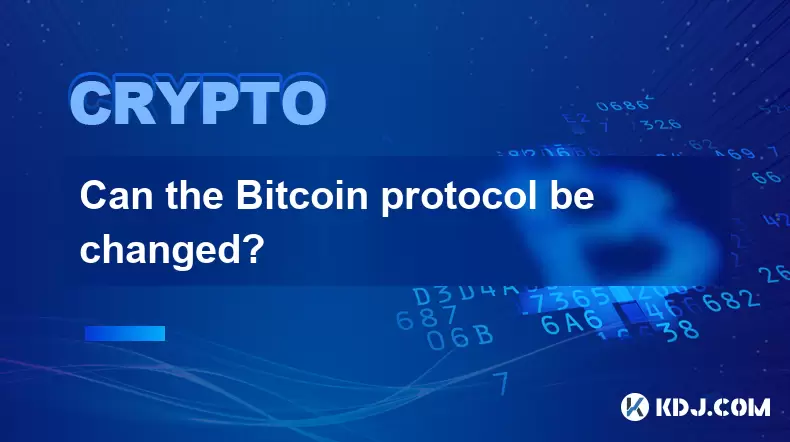-
 Bitcoin
Bitcoin $113200
1.54% -
 Ethereum
Ethereum $4368
1.43% -
 XRP
XRP $3.022
4.23% -
 Tether USDt
Tether USDt $0.0000
-0.01% -
 BNB
BNB $883.5
0.92% -
 Solana
Solana $219.5
5.29% -
 USDC
USDC $0.9997
-0.02% -
 Dogecoin
Dogecoin $0.2411
3.66% -
 Cardano
Cardano $0.8908
5.48% -
 TRON
TRON $0.3349
0.94% -
 Hyperliquid
Hyperliquid $54.50
8.93% -
 Chainlink
Chainlink $23.73
5.54% -
 Ethena USDe
Ethena USDe $1.001
-0.01% -
 Sui
Sui $3.602
5.47% -
 Stellar
Stellar $0.3861
5.90% -
 Bitcoin Cash
Bitcoin Cash $585.1
-1.13% -
 Avalanche
Avalanche $26.09
4.37% -
 Hedera
Hedera $0.2325
5.06% -
 UNUS SED LEO
UNUS SED LEO $9.549
-0.23% -
 Litecoin
Litecoin $114.2
1.13% -
 Cronos
Cronos $0.2502
-2.95% -
 Toncoin
Toncoin $3.134
1.24% -
 Shiba Inu
Shiba Inu $0.00001307
4.10% -
 Polkadot
Polkadot $4.148
3.50% -
 Uniswap
Uniswap $9.759
3.47% -
 Ethena
Ethena $0.8495
11.24% -
 World Liberty Financial
World Liberty Financial $0.2188
3.76% -
 Dai
Dai $0.9997
-0.03% -
 Monero
Monero $271.7
0.21% -
 Aave
Aave $309.2
2.95%
Who is the biggest whale in Bitcoin?
Satoshi Nakamoto, the pseudonymous Bitcoin creator, is believed to hold around 1 million BTC, making them the biggest whale if the coins remain untouched.
Jul 08, 2025 at 02:07 am

Who is the biggest whale in Bitcoin?
When discussing Bitcoin whales, we refer to individuals or entities that hold massive amounts of Bitcoin. These holders have the potential to influence market prices due to the sheer volume of their holdings. Identifying the biggest whale in Bitcoin is a complex task because of the pseudonymous nature of blockchain transactions. However, certain patterns and analyses can provide insights into who might be at the top.
One widely speculated candidate for being the largest Bitcoin holder is Satoshi Nakamoto, the pseudonymous creator of Bitcoin. It's estimated that Satoshi mined around 1 million BTC during the early days of Bitcoin when mining was less competitive. The identity of Satoshi remains unknown, but the wallets associated with these coins have never moved any significant amount, which adds to the mystery. If this were the case, then Satoshi would indeed be the biggest whale by far.
Entities That Could Be Considered Major Whales
While individual identities are hard to confirm, several known entities are considered major Bitcoin whales based on public data and transaction analysis:
- MicroStrategy: This publicly traded company has invested heavily in Bitcoin as part of its treasury reserve strategy. As of recent reports, MicroStrategy holds over 200,000 BTC, making it one of the most prominent institutional holders.
- Grayscale Bitcoin Trust (GBTC): Although not a single wallet, Grayscale controls a large portion of Bitcoin through its trust products. The trust itself holds hundreds of thousands of BTC on behalf of investors.
- Cold storage wallets: Certain cold storage addresses on the blockchain have been identified as holding tens or even hundreds of thousands of Bitcoin without movement for years, suggesting they belong to long-term investors or institutions.
These entities may not be individuals, but their control over substantial amounts of Bitcoin qualifies them as whales in terms of impact potential.
How Do We Track Whale Activity?
Tracking whale activity involves monitoring blockchain transactions using tools like block explorers and on-chain analytics platforms such as Glassnode, Etherscan, or Whale Alert. Here’s how you can identify and track whale movements:
- Use a block explorer: Platforms like Blockchair or Blockchain.com allow users to search for specific addresses and view transaction histories.
- Monitor large transfers: Any transfer above a certain threshold (e.g., 1,000 BTC) is flagged by tracking services and often reported in crypto news outlets.
- Analyze address clusters: Through heuristic analysis, experts can group multiple addresses under a single entity, helping identify institutional wallets or exchanges.
- Watch exchange inflows/outflows: Large deposits or withdrawals from exchanges can signal whale behavior, possibly indicating accumulation or distribution phases.
It's important to note that while these methods are useful, they cannot always reveal the true identity behind the wallet.
What Impact Do Whales Have on the Market?
Bitcoin whales can significantly affect the cryptocurrency market in various ways:
- Price volatility: When a whale moves a large amount of BTC, it can create short-term price fluctuations, especially if the coins are sent to an exchange for sale.
- Market sentiment: Whale activity is often interpreted as a sign of confidence or caution, influencing investor psychology and triggering FOMO (fear of missing out) or panic selling.
- Liquidity changes: Large buy or sell orders from whales can temporarily affect liquidity levels on exchanges, altering order book dynamics.
- On-chain congestion: Massive transfers can increase network fees temporarily, affecting smaller users trying to send transactions at the same time.
Understanding whale behavior helps traders anticipate market movements, though it should not be the sole factor in investment decisions.
Can You Identify a Whale Wallet Yourself?
Yes, technically savvy users can attempt to identify whale wallets themselves using open-source tools and techniques. Here’s how you can begin:
- Download a full node: Running a full Bitcoin node gives you access to all transaction data on the blockchain, allowing deeper analysis.
- Use analytical software: Tools like Chainalysis or Elliptic offer advanced features for tracing and clustering wallet activities.
- Check known lists: Some researchers publish lists of suspected whale addresses based on historical data and heuristics.
- Observe transaction patterns: Repeated high-value transactions, lack of change outputs, and interaction with major exchanges can hint at whale-like behavior.
However, identifying the real-world owner behind a whale wallet remains extremely difficult unless they choose to disclose their holdings voluntarily.
Frequently Asked Questions
Q: Can anyone become a Bitcoin whale?A: Yes, theoretically, anyone who accumulates a large enough quantity of Bitcoin can become a whale. While traditionally associated with early adopters or institutions, accumulating tens of thousands of BTC over time could classify an individual as a whale.
Q: How do whales store their Bitcoin securely?A: Most whales use cold storage solutions such as hardware wallets, paper wallets, or multi-signature setups. Institutional whales often employ custodial services with enterprise-grade security protocols.
Q: Are whale transactions transparent on the blockchain?A: All Bitcoin transactions are publicly visible on the blockchain. However, the identities behind the wallets remain pseudonymous unless linked to real-world information through other means.
Q: Does every large Bitcoin transfer indicate whale activity?A: Not necessarily. Some large transfers occur between exchange wallets or custodial services. It's important to analyze the source and destination of funds before concluding it's whale-related movement.
Disclaimer:info@kdj.com
The information provided is not trading advice. kdj.com does not assume any responsibility for any investments made based on the information provided in this article. Cryptocurrencies are highly volatile and it is highly recommended that you invest with caution after thorough research!
If you believe that the content used on this website infringes your copyright, please contact us immediately (info@kdj.com) and we will delete it promptly.
- USDT0 & X Layer: Unifying Stablecoin Liquidity for a Seamless Web3 Experience
- 2025-09-09 22:45:15
- OnePiece Labs, Solana, and Web3 Acceleration: A Deep Dive
- 2025-09-09 23:45:12
- PENGU Price, PepeNode, and the Funding Revolution: What's Hot in Crypto?
- 2025-09-10 00:05:14
- Dogcoin Mining: Turning a Meme into a Profit Source
- 2025-09-09 22:45:15
- Lyno AI on Avalanche: Accumulating Gains with AI-Powered Trading
- 2025-09-10 00:10:12
- Pepe Coin vs. Layer Brett: Which Meme Coin Will Dominate?
- 2025-09-10 00:10:12
Related knowledge

Why is Bitcoin considered a revolutionary technology?
Aug 12,2025 at 08:29pm
Decentralization and the Elimination of Central AuthoritiesThe core innovation behind Bitcoin lies in its decentralized architecture, which fundamenta...

Why is Bitcoin considered a revolutionary technology?
Aug 10,2025 at 07:42pm
Decentralized Architecture and Trustless TransactionsBitcoin is considered revolutionary because it introduced a decentralized architecture that opera...

What are the key features of Bitcoin?
Aug 10,2025 at 02:50am
Decentralization and Peer-to-Peer NetworkOne of the most defining characteristics of Bitcoin is its decentralized nature. Unlike traditional financial...

Can the Bitcoin protocol be changed?
Aug 07,2025 at 01:16pm
Understanding the Bitcoin ProtocolThe Bitcoin protocol is the foundational set of rules that govern how the Bitcoin network operates. It defines every...

Can the Bitcoin protocol be changed?
Aug 11,2025 at 01:01am
Understanding the Bitcoin Protocol StructureThe Bitcoin protocol is the foundational set of rules that govern how the Bitcoin network operates. These ...

What happens to Bitcoin transactions once they are confirmed?
Aug 09,2025 at 05:22am
Understanding Bitcoin Transaction ConfirmationWhen a Bitcoin transaction is initiated, it is broadcast to the network and placed in a pool of unconfir...

Why is Bitcoin considered a revolutionary technology?
Aug 12,2025 at 08:29pm
Decentralization and the Elimination of Central AuthoritiesThe core innovation behind Bitcoin lies in its decentralized architecture, which fundamenta...

Why is Bitcoin considered a revolutionary technology?
Aug 10,2025 at 07:42pm
Decentralized Architecture and Trustless TransactionsBitcoin is considered revolutionary because it introduced a decentralized architecture that opera...

What are the key features of Bitcoin?
Aug 10,2025 at 02:50am
Decentralization and Peer-to-Peer NetworkOne of the most defining characteristics of Bitcoin is its decentralized nature. Unlike traditional financial...

Can the Bitcoin protocol be changed?
Aug 07,2025 at 01:16pm
Understanding the Bitcoin ProtocolThe Bitcoin protocol is the foundational set of rules that govern how the Bitcoin network operates. It defines every...

Can the Bitcoin protocol be changed?
Aug 11,2025 at 01:01am
Understanding the Bitcoin Protocol StructureThe Bitcoin protocol is the foundational set of rules that govern how the Bitcoin network operates. These ...

What happens to Bitcoin transactions once they are confirmed?
Aug 09,2025 at 05:22am
Understanding Bitcoin Transaction ConfirmationWhen a Bitcoin transaction is initiated, it is broadcast to the network and placed in a pool of unconfir...
See all articles
























































































